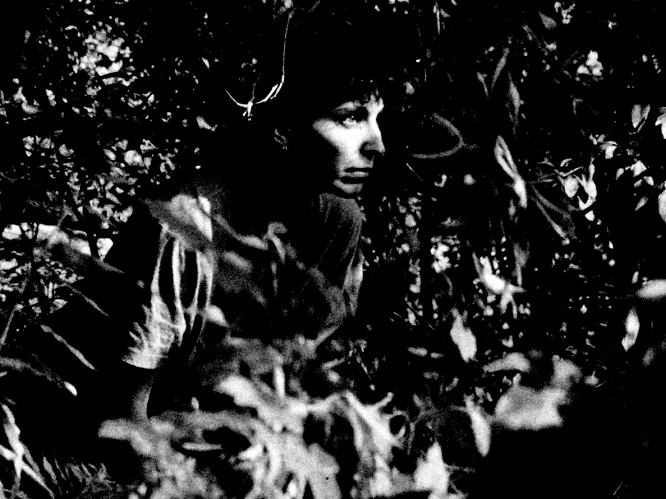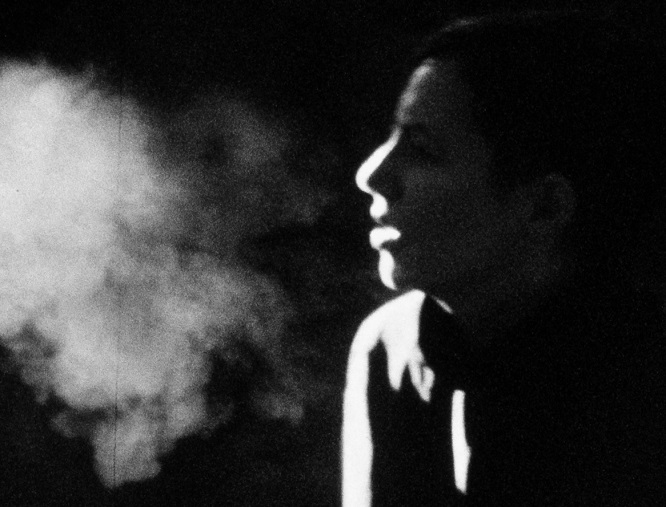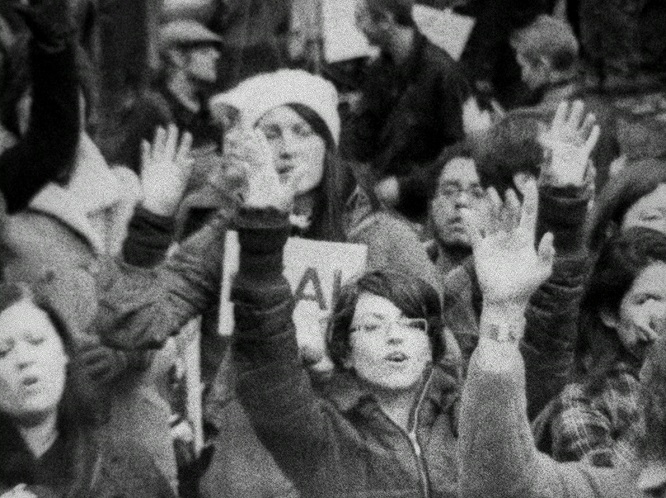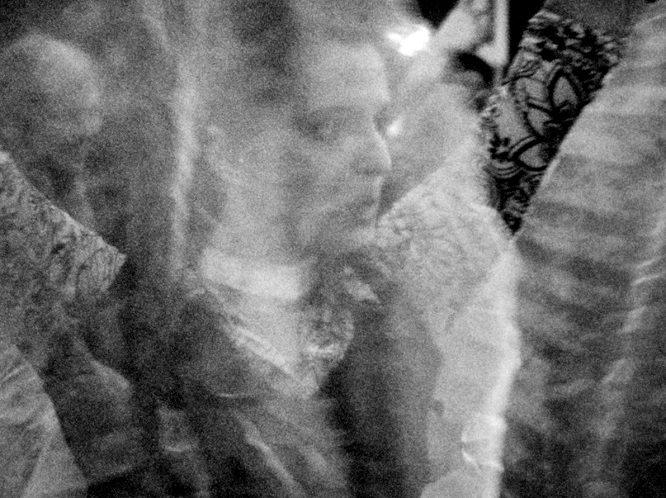

I read two strange and perverse sentences this morning and need to share them with you. They go like this: “Enter by the narrow gate; for wide is the gate and broad is the way that leads to destruction, and there are many who go in by it. Because narrow is the gate and difficult is the way which leads to life, and there are few who find it.” It’s from Matthew 7:13-14.
I think Matthew is trying to assure me that almost everyone goes through the wide gate, that we are busy doing the most obvious things, performing our expected roles, following “common sense,” whatever that meant a hundred or even a thousand years ago. Matthew says that this way leads to “destruction.” Most of the time. Or this is what he’s trying to sell us, people opt for the path of “destruction.”
On the other hand, there are the refuseniks, the outliers, the ones with X-ray vision who can see right through the arrangement of lies that corporate media offers us as “the news.” They are the ones voting for the narrow gate. Matthew says it’s not an easygoing trek, he writes “difficult is the way,” but if you’ve ever called out a pal for saying something racist, if you’re between genders and need to use a public washroom, if there is no one else wearing your skin colour in the class, job site, after-hours club, neighbourhood, you know something about difficulty. Matthew has a pithy one-word description of what lies inside the narrow gate. He calls it “life.”
Does it seem strange to say that “life” is rare, while “destruction,” or death, is the usual? And why am I reading this in the Bible, which pretty much defined what the wide gate was all about, desperately shepherding citizens into prescribed behaviours, pouring hatred over women, Jews and Muslims for centuries?
Pandemic
I spent the first year of the pandemic attending fringe movie festivals online that I never had the money or opportunity to visit. They were dotted across the planet, much to my surprise; what I had always considered a minor literature, a backwater of cinema practice, had somehow become a global enterprise, and film festivals have played a major role in that.
I was struck first of all by the sheer volume of movies. When I began attending fringe movie screenings forty years ago, there was a palpable sense of limits. You could fit every experimental filmmaker and video artist in the world into a single high school auditorium with plenty of room to spare. Today, the fringe is at least an overgrown village, maybe a small town. But the biggest surprise was how these movies reanimated long ago moments. It was as if I had stumbled into a time machine, filled with old tunes and hairdos. It was deeply familiar, the way family or class reunions feel familiar, but when I looked up the artists, I realized they were too young to have seen these forms of practice when they emerged decades ago. What I was watching was a collective nostalgia for a time these artists had never experienced, except via book traces and Internet browsings. There were several recurring trademarks, or traffic signs of the avant-garde, as my friend Mike used to say. Though another big-hearted friend, Caspar, assured me that “there is no more uncharted land, only recombinant possibilities. I often compare it to fashion.” Perhaps the revisit strategies of a post-millennial generation will bring new hopes after all, and can explode these former insider scenes, though the formalist hangover and film fetishism don’t feel promising.

Office Hours
My brilliant not-quite friend Joanne teaches moviemaking at a local university. After dinner, she describes one-on-one encounters where students air out proposals. Her most usual response was not to offer an opinion but a question: what is your idea? Her students had filled the room with word balloons, but as far as she could tell, there were no ideas on display. Her question elicited a predictable spectrum of responses, from bewilderment to rage. It struck me again how rare the act of education is within schools, because what she was really describing was an invitation to learn something, which meant first of all, unlearning something. Every student arrived convinced that they had an answer; in fact, the answers poured out of them without pause. What happens, what becomes possible, when the old answers don’t work anymore? When what looks like an answer is actually a hideout, a distraction, a dodge?
Wide Gate
The old fringe was framed by its awkward machines. They were difficult to use, and so expensive that collectives were formed so that artists could access them. The art that was made out of these machine encounters reflected these restrictions, they were songs of the machine. So it is curious to see these old tropes replayed today, when the dream of a democracy in the means of production has been realized, when recording studios and film labs now live inside a phone.
What is the wide gate of the avant-garde? I guess it’s too easy to pick on the institutions: the co-ops and distributors, the programmers who refuse to leave. Let’s take a step further. For me at least, the numero uno wide gate tendency nowadays is the conversion of fringe movies into a genre. What else to call a genre but orthodoxy itself, with specific defining features, regularly repeated, memorized, followed like scripture? The result, at least for me, is pretty much what Matthew described: the movies lack “life.” They are copies of copies, riffs off discoveries made decades ago by some white father or mother, and in their desire to “fit in,” to put on the appearances of the fringe, whether via the global swoon over emulsion fetishism, durational rigour or copycat insider moves, these movies lack “life.” And, in a perverse symmetry, because exhibition exerts a magnetic pull on production, these films look like festival fare. As if the role of festivals was not a celebration of the new, but an act of conservation and preservation, marking out a field of artist movie practices with precisely defined boundaries. It’s as if festivals had become students of Gertrude Stein, who noted, “It is awfully important to know what is and what is not your business.”
The fact that the work is new acts as a kind of disguise or camouflage. What is really at stake is heritage, tradition and the individual talent, the efforts of our artistic parents. Past bench marks provide the justification, the cover story, for today’s choices. In other words, contemporary festivals appear as elaborate defence mechanisms, because clearly something needs to be defended, energy needs to be poured into the precarious hold of what has already happened. Fringe movie fests keep telling me: our inheritance is in jeopardy.

Golden Age
I believe there has been a serious misunderstanding about the golden ages of the fringe, the heroes of the past. What they offered were a series of singular practices, that they had invented for themselves because they were queer, because their father beat them when they stuttered, because they were the only woman in the room, or the only person whose gender was still a question mark. They ran a wire between their necessity and their makings, and what emerged were unrepeatable bodies of work. They were not part of an unfolding story about their artform. Imitation was a sign of failure. The question that arises for every child: how to stop giving someone else so much power?
Don’t get me wrong, I understand too well the urge to copy the masters, and how those urges can be detoured into finding a prompt for your own urgencies. But I continue to long for a place I can go that celebrates a fringe where I can shake the hauntology of déjà vu, the doomed, tragic sense that we’ve seen all this before.
Perhaps growing old is like being stuck in someone else’s dream. Though I wonder how one might cultivate the road to the narrow gate. As Matthew writes about this seldom visited place: “and few will find it.” What could make the difficulties and struggles on the other side of that tight squeeze of a gate attractive? Apart from the too obvious answer that Matthew delivers, that what is waiting behind that gate is life. That the only way to have a life, or to make something that is alive, is to step through that narrow place.
Perhaps the cinema is an extended act of identification. I feel like the character on the screen feels. Or in the fringe: this quality of attention, the way the camera hovers at this broken wall, invites me to enter it. Perhaps cinema is a place where we want to turn into someone else. Perhaps even movies by artists pose this fundamental question: who do I want to become? What do I want?

Adam
Let me close with an extended riff from former Brit child psychologist Adam Phillips. He is a stranger to the Internet, and writes one day a week, on his day off from seeing patients. Last year, he finished a trilogy of books; the first is called On Wanting to Change.
“And then there is the radical alternative, as it were, that I want to begin with: the wish to become someone no one could possibly be like and who is supposedly not like anyone else. People who want to impress without the desire to convert, in which the possibility of conversion is a missing of the point. These people, one might say, offer us a lot, but nothing that we can be converted to. In fact they exemplify the sense in which conversion is a form of misrecognition; the wish or the desire to convert is a terrible misunderstanding of the problem conversion is expected to solve. Indeed, it is the problem masquerading as the solution; conversion as bad faith, as symptom, as self-avoidance through self-deception. The distinction, then is those who, consciously or unconsciously, encourage us to be like them, or force us to imitate them out of fear and intimidation; and those who inspire us, for want of a better phrase, to become ourselves, to become whoever else we might be. There is, then, our wish, or our need, to identify with others; and the pressure our chosen others may put on us to be like them.”
Perhaps movies by artists might present themselves less like a fate, and more like a repertoire, a series of possibilities, perhaps even a blank space waiting to be inscribed. It makes me wonder: what is the candy of the narrow gate? The milk and honey? How to look for something we can’t know, even after it has found us, and changed us into something unrecognizable, like itself?
All photographs from the personal archives of Mike Hoolboom.
*
Mike Hoolboom began making movies in 1980. Making as practice, a daily application. Ongoing remixology. Since 2000 there has been a steady drip of found footage bio docs. The animating question of community: how can I help you? Interviews with media artists for 3 decades. Monographs and books, written, edited, co-edited. Local ecologies. Volunteerism. Opening the door.
 |
envoyer par courriel | 
| imprimer | Tweet |
